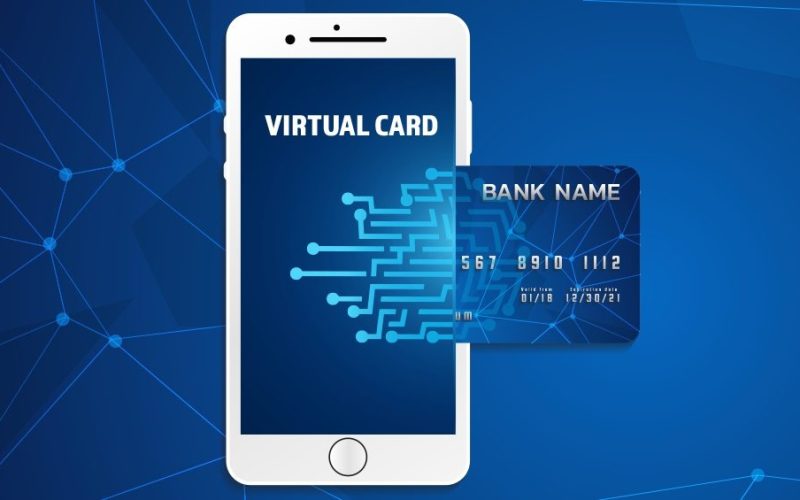To Swipe or Not to Swipe: Weighing the Pros and Cons of Virtual Credit Cards
Introduction
Hi, I’m Fred Wilson, a seasoned blog writer and a personal finance enthusiast. I’ve been using credit cards for over a decade, and I’ve learned a lot about how to use them wisely and securely. In this article, I’m going to share with you one of the best ways to protect your credit card information when shopping online: virtual credit cards.
What are Virtual Credit Cards?
Virtual credit cards are randomly generated card numbers that you can use instead of your actual credit card number when making online purchases. They are linked to your credit card account, but they don’t reveal your real account number to the merchant. This way, you can avoid exposing your sensitive information to hackers or data breaches.

How do Virtual Credit Cards Work?
Depending on your card issuer, you may be able to request a virtual card number online or through an app or browser extension. Some virtual card numbers are valid for one-time use only, while others can be used for multiple transactions or recurring payments. You can also set spending limits or expiration dates for each virtual card number, giving you more control over your spending.
What are the Benefits of Virtual Credit Cards?
Virtual credit cards have many advantages for consumers in terms of security and privacy. Here are some of the benefits of using virtual credit cards:
- Extra protection: They shield your credit card number while shopping online, providing extra protection against identity thieves. Even if a virtual card number is compromised, it may not do much good to a criminal because it might already have been deactivated or have a low spending limit.
- Easy management: You can create new card numbers for different merchants, change your card number on the fly, or delete a card number without affecting your actual account. You can also track your spending and transactions with each virtual card number separately.
- No extra cost: Virtual credit cards are usually free to use, as long as you have a credit card account that offers this feature. You don’t need to apply for a new card or pay any additional fees to use virtual credit cards.
What are the Drawbacks of Virtual Credit Cards?
Virtual credit cards are not perfect, and they may have some limitations or drawbacks. Here are some of the potential disadvantages of using virtual credit cards:
- Online-only: Virtual credit cards can only be used for online purchases, or in some cases, over-the-phone transactions. They are not usable in physical stores or ATMs, unless you add them to a digital wallet like Apple Pay or Google Pay.
- Extra steps: You may have to go through a few extra steps to generate a virtual card number when making a purchase, which can be inconvenient or time-consuming. You may also have to remember or store your virtual card numbers somewhere, or use a browser extension or app to access them.
- Limited availability: Not all credit card issuers offer virtual credit cards, and not all merchants accept them. You may have to check with your card issuer and the merchant before using a virtual card number to make sure it works.
What are the Best Credit Cards that Offer Virtual Credit Cards?
If you are interested in using virtual credit cards, you may want to consider applying for a credit card that offers this feature. Here are some of the best credit cards that offer virtual credit cards, based on their rewards, benefits, and costs:
| Card | Rewards | Benefits | Annual Fee |
|---|---|---|---|
| American Express® Gold Card | 4X points at restaurants and U.S. supermarkets, 3X points on flights, 1X points on other purchases | Up to $120 dining credit, up to $120 Uber Cash, baggage insurance, no foreign transaction fees | $250 |
| Capital One Venture X Rewards Credit Card | 10X miles on hotels and car rentals, 5X miles on flights, 2X miles on other purchases | Up to $300 travel credit, Priority Pass Select membership, Global Entry or TSA PreCheck credit, no foreign transaction fees | $395 |
| Citi Double Cash Card® | 2% cash back (1% when you buy, 1% when you pay) | 0% intro APR on balance transfers for 18 months, Citi Identity Theft Solutions, Citi Entertainment | $0 |
| Blue Cash Preferred® Card from American Express | 6% cash back at U.S. supermarkets and on select U.S. streaming services, 3% cash back at U.S. gas stations and on transit, 1% cash back on other purchases | 0% intro APR on purchases for 12 months, car rental loss and damage insurance, return protection, no foreign transaction fees | $0 intro annual fee for the first year, then $95 |
| Capital One Savor Cash Rewards Credit Card | 4% cash back on dining, entertainment, and popular streaming services, 3% cash back at grocery stores, 1% cash back on other purchases | Up to $120 streaming credit, no foreign transaction fees | $95 |
Conclusion
Virtual credit cards are a great way to protect your credit card information and enhance your online shopping experience. They offer extra security, easy management, and no extra cost. However, they also have some drawbacks, such as online-only use, extra steps, and limited availability. You may want to weigh the pros and cons of virtual credit cards before using them, and choose a credit card that offers this feature and suits your needs.












